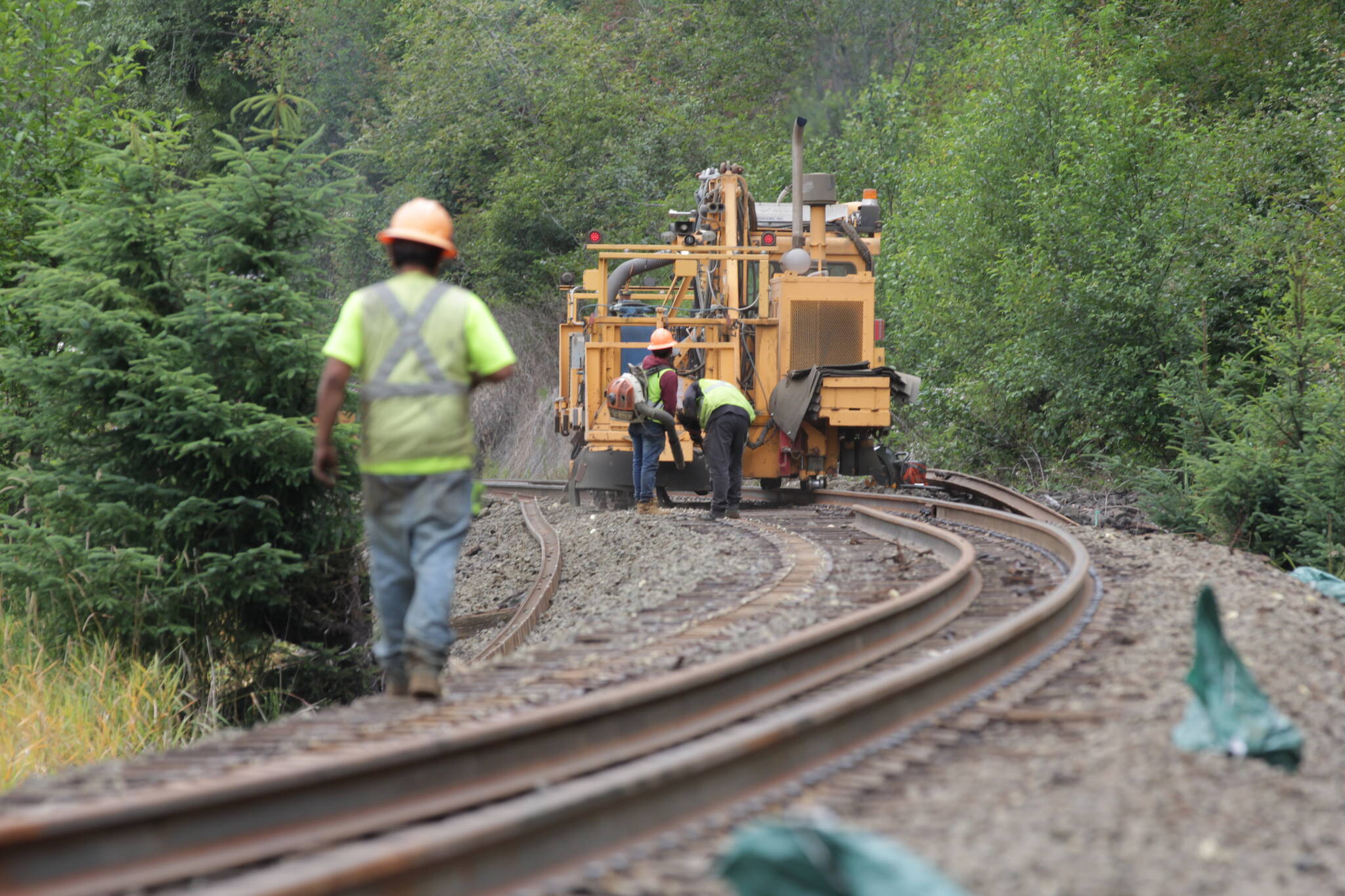A pair of projects worth millions are currently underway as Puget Sound and Pacific Railroad seeks to increase reliability and remove traffic-causing issues in Grays Harbor County.
The short-line railway is building a siding south of Elma, intended to give trains more options for passing and to spend less time blocking the road in the town, as well as replacing seven miles of rail between Montesano and Aberdeen with continuously welded rail, which is more reliable, said Ross Lane, assistant vice president for government affairs for PSAP’s parent company, Genesee & Wyoming Railroad Services, Inc.
“Everyone with PSAP lives in this community,” said the railroad’s assistant general manager, Raleigh Finch, an Elma local. “We’re local. We want to see everything succeed and the rail be better.”
PSAP connects the port and other clients in the county to the major railroads closer to I-5, where the cargo aboard the railcars can go anywhere, Lane said. Additionally, the railroad helps keep the cargo that would otherwise take thousands of extra trucks on the road each month aboard railcars instead, Finch said.
“It saves a lot of roadway if that freight goes rail,” Finch said. “There’s less damage to the infrastructure.”
One railcar is able to carry about four truckload’s worth of cargo, Lane said — at more than 30 trains with 100 cars each, that’s about 1,200 extra trucks each month on highways that are already going to be constrained with construction for the next several years. Soybean meal is one of the most common products, the Daily World previously reported, destined for Ag Processing Inc’s facilities at the port.
Elma siding
The siding, located alongside U.S. 12 south of Elma, will help to minimize situations where trains needing space will block roads for extended periods of time, Finch said. A $2.8 million project, the work began in June and is expected to wrap up in November with completion of the 7,400 foot siding and the addition of a radio controlled switch. The switch alone will save ten minutes a time as a train can trip it remotely without having to decelerate, stop, do the switch manually, and accelerate again, Finch said.
“There’s a crossing that we’re blocking in Elma when we do it,” Finch said. “(The project is) going to drastically cut it by 90 percent.”
The increased traffic forecast comes as the Port of Grays Harbor seeks to expand its terminals for more shipping, which may as much as double the rail cargo carried by PSAP, the Daily World previously reported. The port is the railroad’s biggest- but not only- client, Lane said.
“We are expecting increased rail traffic,” Lane said. “We want to minimize these chokepoints.”
The siding is being constructed on land already within the railroad’s right of way, Finch said.
“It’s been in the planning stages for a while. We’re thankful we’re able to make it happen,” Finch said. “It’s been really smooth.”
The railroad is also looking at replacing culverts under the railway near Elma as a flood relief measure, Lane said.
Continuously welded rail
The other project is a $3 million replacement of about seven miles of bolted rail with continuously welded rail. Continuously welded rail requires less maintenance, leading to lower operating costs and breakages over bolted track, Finch said.
“Over time, the joints, the bolts get loose,” Finch said. “You have to tighten or replace the bolts.”
The continuously welded rail, which is welded together in place with occasional bolts in place for heat expansion, involves much less maintenance, Finch said.
“We’re slowly picking away at these projects,” Lane said in an interview. “Often these lines weren’t maintained or maintained at a minimum level under prior ownership.”
Properly maintained, rails can last decades, Lane said. Crews are currently replacing between about 1,400 and 2,500 feet of rail each day, working around train schedules, Finch said.
“It can be a long-lived asset,” Lane said. “It can be 100 years old if it’s properly maintained.”
Rail projects are a capital-intensive proposition, Lane said. Grants from the state and federal government, some of which helped support these projects, help the railroads to complete projects and improvements much more handily, Lane said.
“We’re operating on privately financed infrastructure and we’re supporting one of the largest industries in the county. Without rail service that economic activity is at risk,” Lane said. “When you have public investment you can realize the benefits of investment much more quickly.”
“As a railroad, we want to grow. There’s new traffic that’s coming to this railroad,” Lane said. “This is a great opportunity to get these maintenance projects finished.”
Contact Senior Reporter Michael S. Lockett at 757-621-1197 or mlockett@thedailyworld.com.


